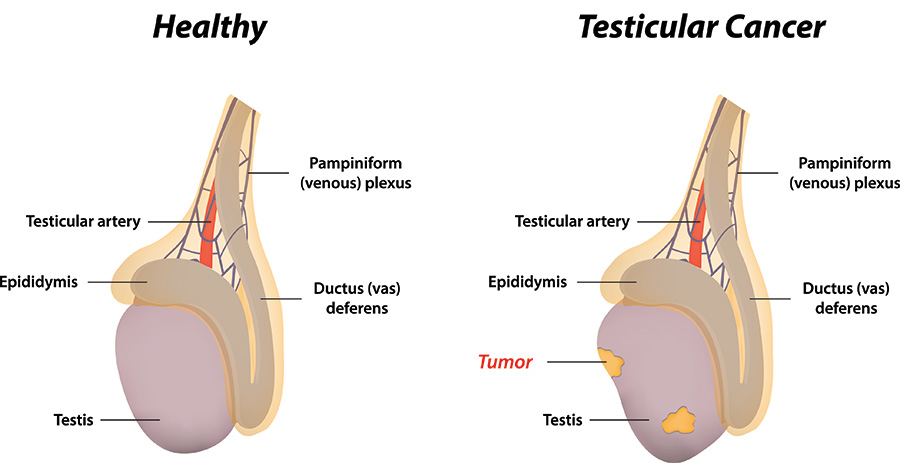
Testicular cancer starts in the testicles, which are parts of the male reproductive system. The testicles are two small glands inside the scrotum, the pouch of skin below the penis. They make hormones and sperm. Testicular cancer is rare, but it is one of the most common cancers in younger men between ages 15 and 35. Overall, testicular cancer accounts for only about 1% of all cancers in men.
There are two main types of testicular cancer:
Your doctor will determine exactly what type of cancer you have through testing.

Some common signs of testicular cancer include:
If you notice any of these symptoms, see your doctor right away for an exam. Catching testicular cancer early greatly improves treatment success.
Certain factors can increase your risk of developing testicular cancer:
To diagnose testicular cancer, your doctor will:
These tests will help determine if you have testicular cancer and if so, what type you have.
Testicular cancer is categorized into stages based on how far it has spread:
Knowing the stage helps determine the right treatment approach.
Common treatments for testicular cancer include:
Your doctor will recommend the best treatment plan based on your specific case. The good news is that testicular cancer is highly treatable, especially when detected early on.
The outlook for testicular cancer is generally very good, particularly when diagnosed at an early stage:
Discuss your prognosis with your doctor, as many factors affect your outlook.
Dealing with testicular cancer can be challenging. Be sure to:
Your medical team is there to support you throughout the process. Staying strong and hopeful also helps in the healing process.